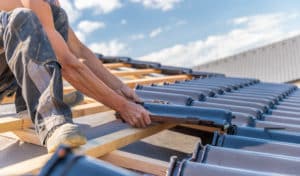Understanding the functions of each part of the roof.
Understanding the components of your roof can help you understand the estimates that you will be receiving from contractors.
Learn more about the different parts of a roof at Parts of a Roof from https://advosy.com/.
Shingles Selection
Understanding warranties
Impact on ventilation and the various types of storm-damaged roof repair
Decking is a type of outdoor flooring (or sheathing).
The decking is usually made from 12-inch plywood. It seals and strengthens your roof structure. It is also used to attach roofing shingles.
-
The edge of the roof (or the edge between the eaves),
The boards run along the roof's edges or eaves. Fascia is also known as fascia.
-
Attic
This is the area of the roof. Click Here to open the information box. Click Here to open the more information box.
-
Saddle
Rainwater is diverted to the chimney by a structure that is placed behind the chimney's upper side (or similar extensions of the roof).
-
Ridge
A horizontal line runs along the roof's top.
-
Valley
A V-cut angle is formed when two roof slopes intersect.
-
The membrane can be used as an overlay
The coating is made from asphalt-soaked felt or synthetic fabric. This coating protects the roof shingles from resin from wood decking and decking.
-
Membrane to the eaves
This protective membrane is installed underneath asphalt shingles in winter to stop water infiltration from "ice dams". "
-
The membrane can be used as an overlay
The asphalt-soaked felt or synthetic fabric is used for this coating. This coating protects the shingles from resin from the wood decking and protects the decking from the weather.
-
Edge with drip
Roof edge protection and water infiltration prevention.
-
Ventilation on the roof
The best ventilation is achieved by using four open sides. These vents are elevated above the roof, allowing airflow in all directions.
-
Deflector
Allow air to flow freely above insulation near the soffits. A piece of cardboard or polystyrene should be placed between the two rafters.
-
Vent for the Plumbing
It connects to the plumbing system via the roof. It allows wastewater to flow to either the sewer or the septic system leaching area.
The lights flash, (joint covers).
You can make flashing from aluminum, galvanized steel or plastic. Flashing can be made from galvanized steel, aluminum, or plastic.
Shingles
Shingles can be made from fiberglass or asphalt. Shingles protect your roof from rain and add style to your home.
-
Shingles Selection
Asphalt shingles are extremely popular in North America because of their ease-of-use installation and low cost. Asphalt shingles are waterproof for 20-40 years.
Although it is technically possible to replace old roof shingles with newer ones, this could lead to distortions in the new covering.
Quality is equal to the thickness
Shingles that are thicker and heavier are more resistant to severe weather. There are two types of fiberglass-based roofing shingles:
-
Three-tab shingles only have one reinforcement layer. Laminated (or architectural) shingles have two to three reinforcement layers.
-
Laminate Shingles are more expensive but have a longer warranty.
Always have extra roofing materials in case of roof damage. Old shingles can be recycled.
It's good to know.
You might be familiar with purchasing shingles online. It is possible to buy shingles online. You should be cautious about using new materials that don't comply with local building regulations.
Understanding warranties
Manufacturers of asphalt shingles offer a 100 percent guarantee at first. Laminates have a 15-year warranty. A single-layer shingle usually comes with a 5-year warranty. Laminates come with a 15-year warranty.
-
Extended warranties may be available.
Extended warranties are available for roofing systems that include a selection of shingles, eaves membrane, and underlay. These expensive, but more ambitious programs provide coverage for material and labor for up to 50 years. As a result, only a manufacturer-certified roofer can perform repairs covered by such warranties. A guarantee can be voided if certain issues are present, such as inadequate attic ventilation or deteriorated decking. It is important to follow the recommendations of your contractor for corrective actions before the shingles can be installed. Ventilation: The different types of roofs
The type of your roof will determine the minimum requirements you must follow. It could cause roof damage.
The slope of your roof must be determined. This is crucial in several ways.
-
Asphalt Shingles are used to cover slopes with a minimum of 1:13 (in the Imperial measure) or 412 (in the Imperial measure).
-
This means that the materials and the installation must match the roof's slope. Shingle roofs will not be waterproofed unless they are absolutely necessary.
-
The type of roof determines the size of ventilation apertures that are needed to maintain adequate airflow. For every 300 square feet of insulated ceiling, there should be at least one square foot worth of ventilation apertures. There should be at least one square foot of ventilation apertures for every 300 sq. feet of insulated ceiling. Each 300 sq. For every 300 sq. meters of the ceiling, there should be at least one square meter of openings.
Different roof types
-
The roof of the house is flat.
-
Roofs slope less than 212 are considered flat. The ventilation apertures to insulated roof ratio should be no more than 1:150
-
Without an attic, the roof is called "cathedral roofing." "
-
Roofs without attics should have ventilation ratios between 1:50 to 1.50. Openings should be provided at the roof's base and summit.

